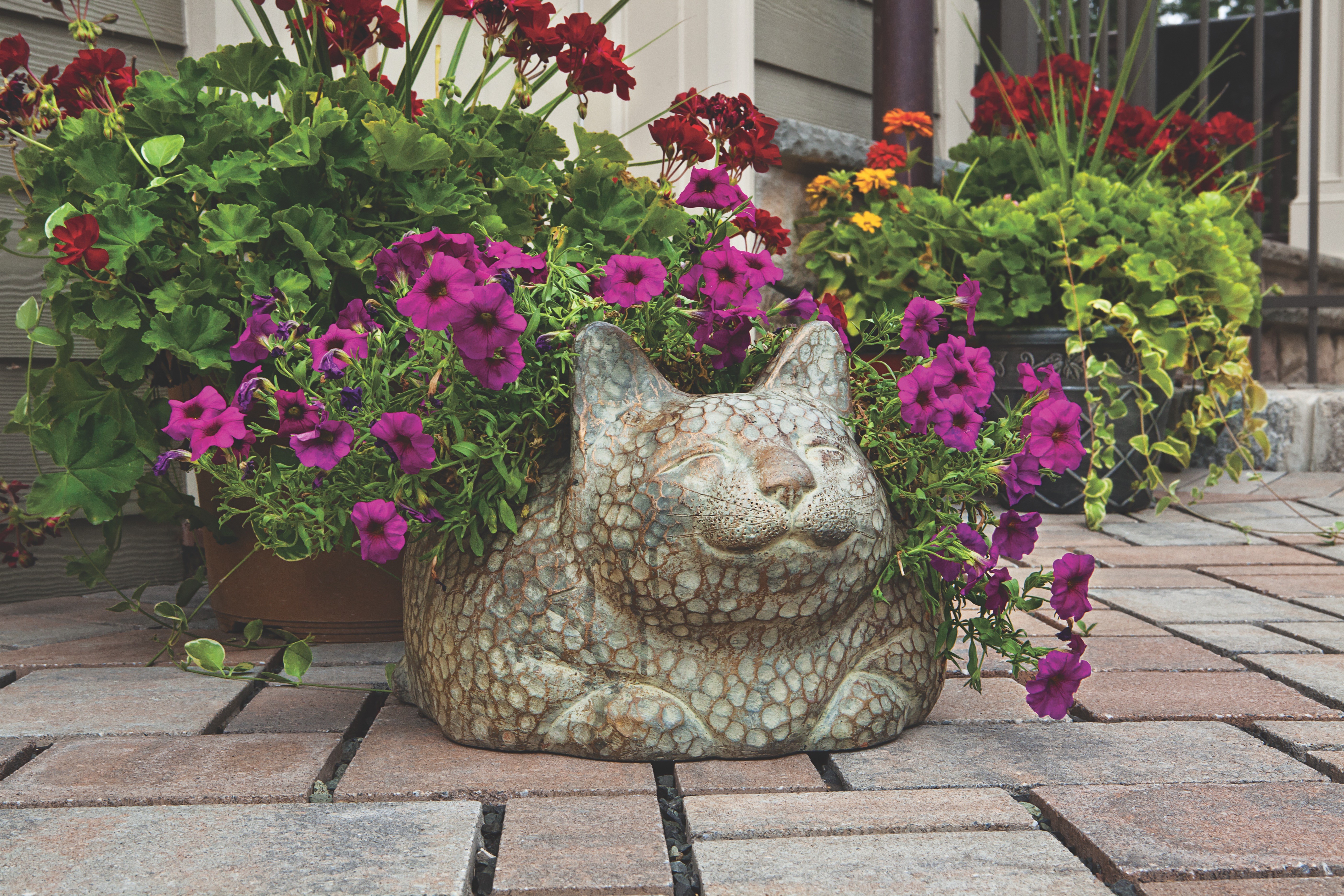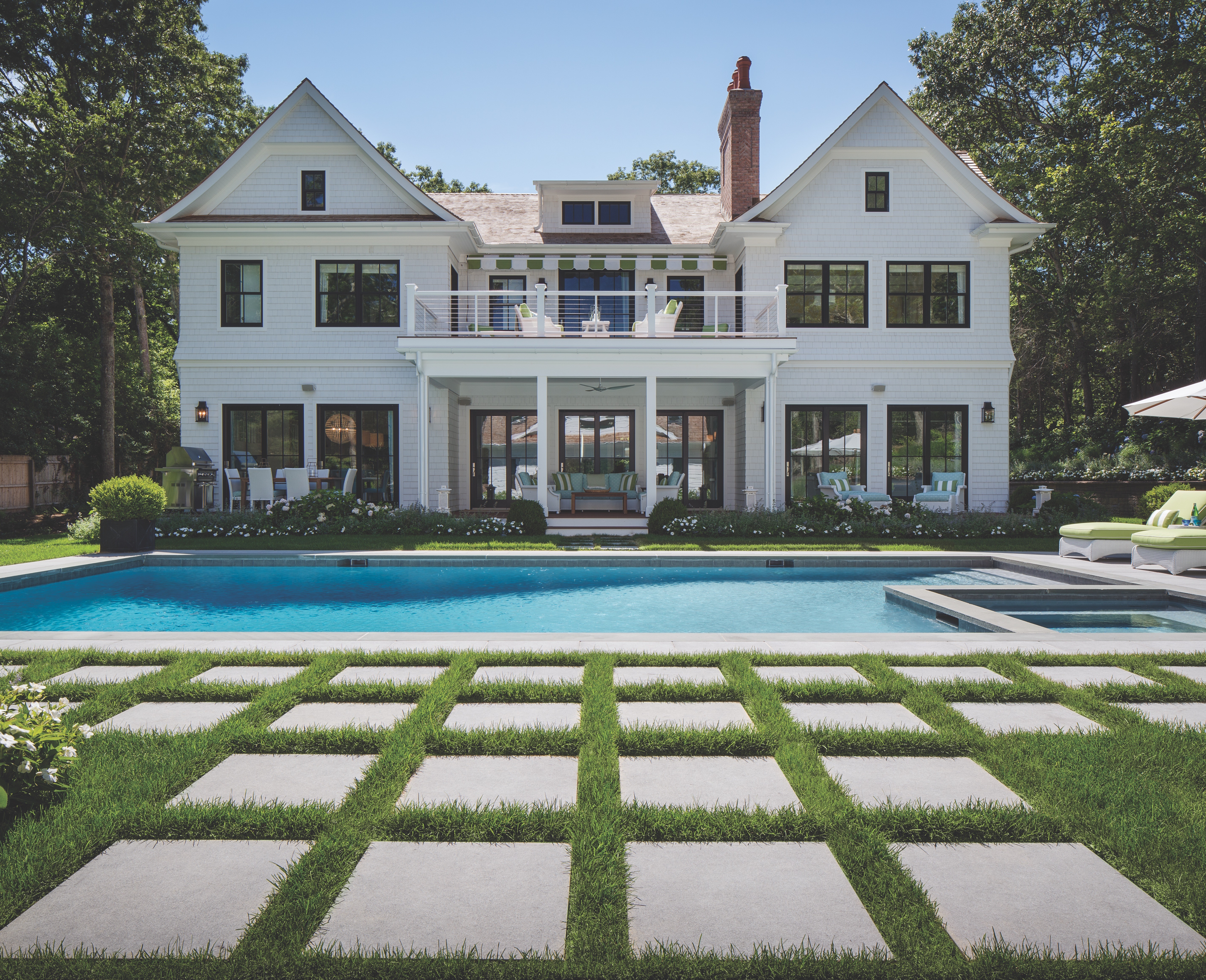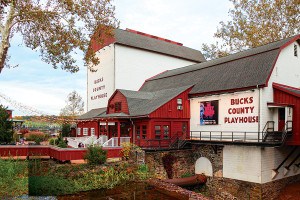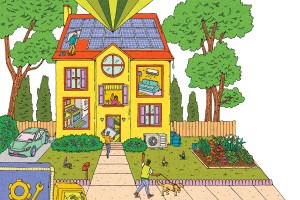The City May Pay You Up to $2,000 to Make Your Patio Greener
Swapping cement for paving stones and rain gardens will benefit you, the environment and your wallet.

Why is this cat smiling? Between the plants he’s holding and the permeable paving stones he’s sitting on, he’s helping the Philly-area homeowner who installed them reduce stormwater runoff and make the outdoor environment more attractive. | Photos: Chipper Hatter via Belgard
Hey, you there! Yes, you with the concrete-floored, stucco-walled patio in the back of your rowhouse!
Don’t all those hard surfaces make you feel a little, well, gray?
Maybe you should try adding some different colors to that space. Like green. Or brown. Or burnt red.
And while you’re at it, how about trading in that concrete and stucco for something that looks and feels more like what you’d find in an actual garden?
There’s a name for this approach: “biophilic design.” It’s a growing trend in both indoor and outdoor design that makes you, your home and the environment all better.
And if you live in the city, it may not even cost you a dime to implement it.
Design with nature in mind
Now, you might say that an outdoor space already has lots of nature in it, and if the space we’re talking about is a suburban backyard, that’s pretty much true. But even in the ‘burbs, we build things like concrete patios that diminish that connection with nature. And on small city house lots, those concrete patios often represent all the connection with nature one will have in one’s home.
The thing is, with a little thought, one can strengthen that connection with nature with the right materials. “Biophilic design is an effort to incorporate architecture and nature,” says Dan Moreland, regional sales manager for Belgard, a manufacturer of architectural paving materials. “The goal is to incorporate as many natural elements as possible into the building.”
You and your bank account will feel better
A growing body of research finds that designing with an eye towards nature makes you healthier — and wealthier. Firms like Terrapin Bright Green that advise companies and builders on ways to incorporate green design into their buildings have produced reports that show quantifiable improvements in chronic conditions such as ADHD and faster recovery from illness from exposure to nature, for instance.

Planter beds, permeable paving stones and wall treatments with more natural materials can go a long way towards making your backyard patch of concrete more relaxing and welcoming.
Then there’s the money-in-your-pocket part. Natural features like trees and views of water add anywhere from seven to 127 percent to the price buyers would pay for a property, depending on where the property is located, according to one of Terrapin’s reports on “The Economics of Biophilia.”
So what’s this got to do with that patio of yours? The answer: You don’t have to turn it into a lawn in order to give it a more natural feel. Permeable paving stones both improve the attractiveness of your patio and filter rainwater back into the ground just as soil would. Or you could use what are known as “grid pavers” – paving blocks with openings within them that you can fill with soil and grass.
Border either of these with plantings to bring even more nature in. Even simply spacing non-porous paving stones so that grass grows between them lets you make your patio look and feel more natural.
The city may pay you for doing it a favor
And by doing this, you’re doing the city a solid too, for this reduces the amount of stormwater that runs into the city’s sewers.
In fact, the city will be so grateful you’ve done this that it might just repay you for the favor. Glen Abrams, director of sustainable communities at the Pennsylvania Horticultural Society, explains:
“The Water Department has a residential stormwater management program called Rain Check. It’s managed by the Horticultural Society in partnership with the Sustainable Business Network of Greater Philadelphia.
“Through this program, the city subsidizes the installation of green stormwater infrastructure tools, including replacing a conventional concrete patio and replacing it with interlocking permeable pavers.
“The program will provide a subsidy of up to $2,000 to replace a patio, or install a rain garden, or just remove pavement and put something else in.” The program also hands out rain barrels to any city resident who wants one for free. Many home rainwater management tools will run you much less than $2,000 to boot.

Yes, owners of houses on larger lots can qualify for rebates under the Rain Check program too. | Photo via Belgard
Other things you can do to bring more nature into your concrete backyard include installing planter boxes on your dividing walls, installing stone siding with drainage channels built in that feed water into the ground, or installing “living walls” covered with vegetation.
The Rain Check website will guide you through the process of determining what kind of tools and projects work best for your home or yard. Your professional landscaper can also advise you about a range of options and strategies for making your patio or backyard greener.


